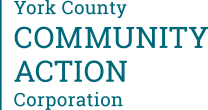EXPLORE YCCAC PROGRAMS
Children & Family
Medical, Dental & Behavioral Health
Home Ownership & Repair
Economic Opportunity
Join Our Newsletter
207 324-5762
info@yccac.org
6 Spruce Street
Sanford, ME 04073
Translate »

History
York County Community Action Corporation was incorporated in 1965 in response to the Economic Opportunity Act of 1964.
Amidst a national poverty rate of 19 percent, President Lyndon B. Johnson delivered his first State of the Union address to the American people, in which he declared his Administration’s “unconditional war on poverty.” President Johnson’s promotion of this a just and equitable society was offered up in stark contrast to his description of the ways in which too many Americans were currently living “on the outskirts of hope” as a result of poverty or racial discrimination. “Our task,” he said, “is to help replace their despair with opportunity.”
For America to achieve this heavy lift, however, the war would have to be fought at home, on the local level, through partnerships across public, private, municipal, community, and personal spheres and the federal government. The “chief weapons” in this fight, he explained, included better schools, health, housing, training, and job opportunities. President Johnson invited America to join in his vision and pursuit of “The Great Society,” in which all Americans might forge a pathway out of the hinterlands of poverty and racial discrimination to the realm of the middle class.
On August 20, 1964, President Johnson signed the Economic Opportunity Act of 1964, which created a slate of programs designed to “mobilize the human and financial resources of the Nation to combat poverty in the United States.” The Act established several new education, employment and training, and work-experience programs such as the Job Corps and the Neighborhood Youth Corps. At the local level, new entities called Community Action Agencies (or Programs—CAP) were created to initiate and operate the local War on Poverty.
Community Action Agencies were located in economically and socially depressed neighborhoods, staffed with outreach workers whose job it was to seek out residents who were in need of help—to ORGANIZE and MOBILIZE America’s War on Poverty from the ground, up. A provision of the Act called for those who were living in poverty to have maximum feasible participation in the identification of social and economic problems, and the subsequent development of solutions to address poverty. Thus, for the first time ever, it was the poor who were charged with informing the work of these community-based organizations.
By 1969, many successful self-help programs had been initiated, including Head Start, Family Planning, Community Health Centers, Legal Services, VISTA (Volunteers In Service To America—also known as the “Domestic Peace Corps”), and Economic Development, among many others.
ABOUT CAPs
Community Action Agencies (CAAs), also known as Community Action Programs (CAPs), are local public and nonprofit organizations that administer a variety of programs designed to help promote self-sufficiency and economic stability. York County Community Action Corporation has programs that deliver social services including WIC, Head Start, and CHIP. We are also one of only a few organizations in the country that is both a community action agency and a federally qualified community health center.